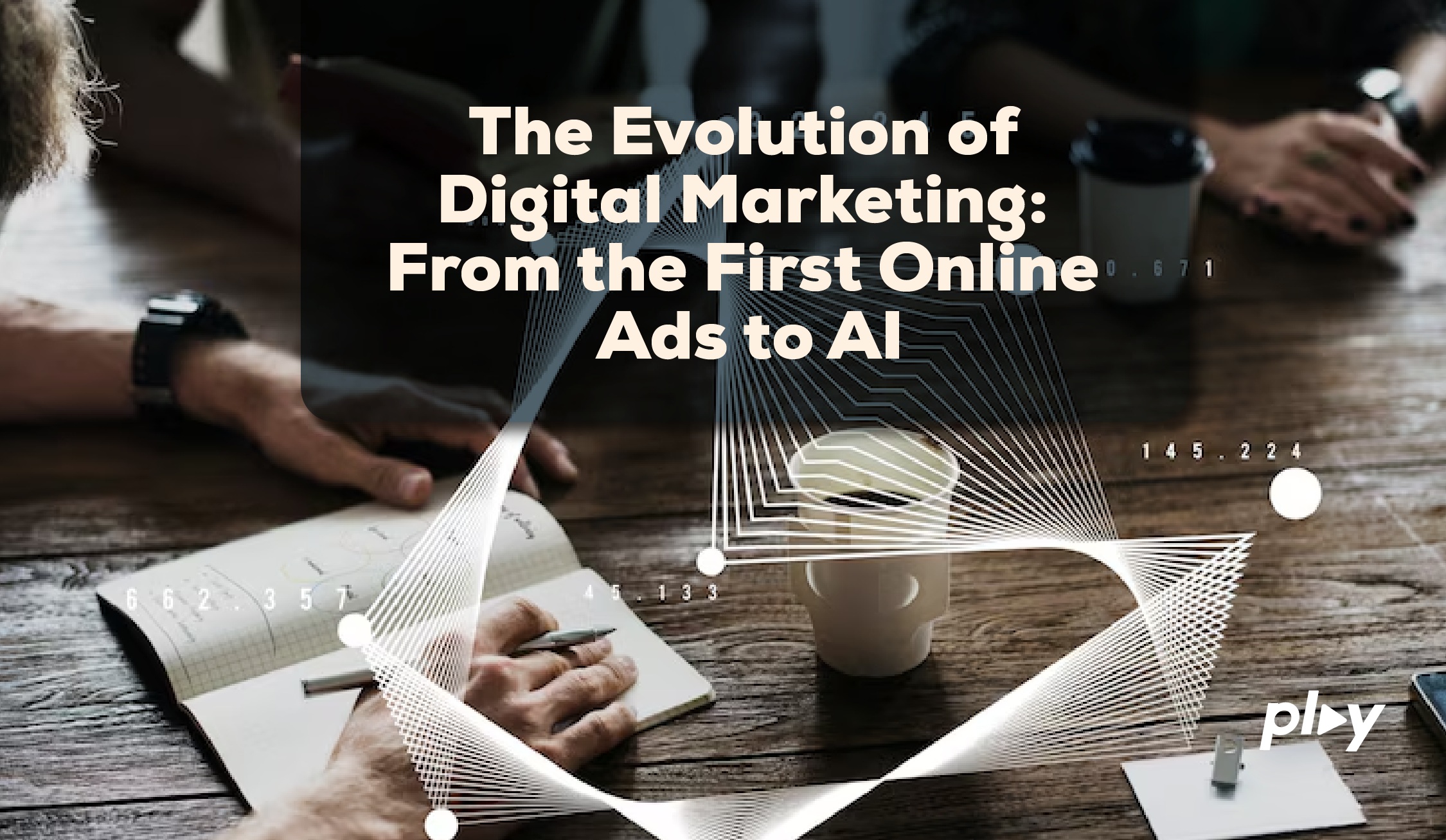The Evolution of Digital Marketing: From the First Ads to AI

Somewhere, in an old library archive or buried in a dusty box in a New York office, there’s a yellowing print ad that changed everything. It might’ve been a Coca-Cola ad, or a soap brand, or a headline from The New York Times pitching a new Model T. But that was the beginning—when marketing first moved from word of mouth to mass media.
And now, here we are. AI is writing copy, bidding on ads in milliseconds, segmenting audiences in ways even the most seasoned marketer of the 1950s couldn’t fathom. We’ve gone from billboards to biometric data in less than a century.
Since 2007, PLAY has witnessed this evolution firsthand—and more importantly, we’ve had to make decisions that not only keep us relevant but push us (and our clients) ahead of the curve. And if you’re reading this, I’d wager you’re trying to do the same.
So let’s walk this timeline together—not as a nostalgic look back, but as a map for where we’re going next.
The First Digital Ad: 1994 and the Banner Heard Around the World
The first true digital ad was a banner ad for AT&T that ran on Wired magazine’s website (then known as HotWired) in 1994. It had a simple message: “Have you ever clicked your mouse right here? You will.”
That ad had a 44% click-through rate.
Today, a 0.5% CTR is considered solid for display. Why? Because we’ve trained users to ignore ads—but also because marketing got smarter.
With tracking pixels, audience targeting, Google AdWords (launched in 2000), and Facebook Business Manager (2012), marketing stopped shouting at everyone and started whispering directly to the right people. But with better tools came a harder truth: marketing became a data game.
Phase II: Data-Driven Obsession
Between 2010 and 2020, marketing became synonymous with measurement. Clicks, conversions, bounce rates, CAC, LTV, ROAS. If you weren’t tracking every impression, were you even marketing?
A 2018 Forrester report found that data-driven companies are 23x more likely to acquire customers and 19x more likely to be profitable. Agencies like ours didn’t just pivot—we had to learn the languages of platforms, pixels, and performance.
The marketers who didn’t evolve? They became obsolete.
The Rise of AI and Predictive Marketing
Fast forward to today, and we’re not just reacting to data—we’re predicting behavior before it happens.
AI tools are forecasting which customers will convert, writing headlines in seconds, personalizing entire email journeys, and even creating video content. Google’s Performance Max campaigns use machine learning to find your most valuable customers across every channel with minimal human input.
But here’s the million-dollar question: Are we still marketing… or are we just optimizing?
The New Challenge: Being Human in a Machine-Learning World
At PLAY Creative, we’ve embraced AI—but we also challenge ourselves constantly: What does real creativity look like when an algorithm can do 80% of the work?
To us, it looks like this:
- Understanding the nuance of a client’s brand voice and training AI to reflect it—not replace it.
- Asking the questions AI can’t yet answer, like: What does this feel like to a human being?
- Building strategy that considers ethics, empathy, and emotion, not just clicks.
Because at the end of the day, data can tell you what happened and who did it—but only people can truly ask why it matters.
Where We’re Going Next: The Merging of Mindsets
The future of digital marketing isn’t AI vs. human—it’s AI + human. It’s the copywriter who uses ChatGPT to speed up a first draft, but rewrites it with insight and instinct. It’s the media buyer who trusts machine learning but overlays campaign strategy with deep market knowledge and intuition.
In fact, a 2023 McKinsey study found that hybrid AI-human teams outperform either AI alone or humans alone by 35% in marketing ROI. That’s the sweet spot we chase every day at PLAY.
A Final Thought
The history of marketing is the history of attention. We’ve moved from capturing attention in a crowd to creating individualized moments that feel personal—even magical.
But here’s the truth: The best marketing has always been about more than selling. It’s about understanding people, solving problems, and telling stories that stick.
AI will make us faster, smarter, and more scalable. But it won’t make us more human. That’s still our job. And if we get it right, the next era of marketing could be the most powerful and personal yet.
So the next time you’re tweaking your campaign or diving into performance data, ask yourself:
Are you creating something people need—or something they’ll never forget?
We know which one we’re aiming for.
Thanks for following along. If you’re as fascinated by the future of marketing as we are, keep checking back. At PLAY, we’re not just watching this evolution—we’re helping write its next chapter.
